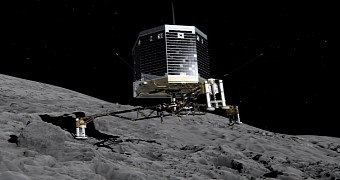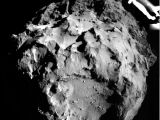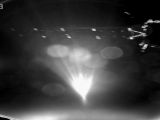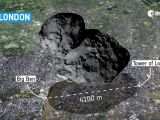Yesterday was a heck of a big day for mankind. A spacecraft dubbed Philae landed on the surface of a comet some 510 million kilometers (about 317 million miles) from our planet and managed to attach itself to its body.
The lander was carried all the way to this comet by the European Space Agency's Rosetta spacecraft. Rosetta and Philae left Earth on March 2, 2004, and reached Comet 67P/Churyumov-Gerasimenko earlier this year, on August 6.
Having spent a few weeks admiring the comet from afar, the Philae spacecraft was finally given permission to break free from Rosetta and embark on a solo journey to the celestial body.
When deployed, the lander was at about 22.5 kilometers (roughly 14 miles) away from the comet. It took Philae about 7 hours to cover this distance. The lander left Rosetta at 08:35 GMT / 09:35 CET, and the signal confirming the touchdown reached Earth at 16:03 GMT (17:03 CET).
Philae landed on the comet not once, but thrice
Scientists with the European Space Agency are still receiving and analyzing data concerning Philae's landing on Comet 67P/Churyumov-Gerasimenko, so a final and definite account of what exactly happened in space yesterday it not yet available.
Still, latest information indicates that the Philae spacecraft landed on its target comet not once, but three times. Thus, word has it that, having reached the comet's surface, the lander bounced off it at least 2 times.
The lander did not give up and eventually managed to make one final landing and attach itself to the comet's body. Philae is now traveling through space on the comet's back at a speed of about 18 kilometers per second (11 miles per second).
The first bounce sent the lander about 1 kilometer (0.6 miles) above the surface of the comet, where the spacecraft remained for about 2 hours. The second bounce was a wee more gentle, meaning that the lander was reunited with its target after just 10 minutes or so.
It is understood that Philae bounced off the surface of the comet because its two harpoons failed to deploy properly and secure it in place. What's more, the thruster that was supposed to push it downward failed to work as well.
The good news is that, as mentioned, the lander now finds itself on the surface of Comet 67P/Churyumov-Gerasimenko. Should it manage to make use of its rechargeable secondary battery, it could keep up and running until March, 2015.
Philae might not be securely locked in place
According to specialists with the European Space Agency, there is evidence that the lander might not be securely locked in place. More precisely, it could be that the spacecraft landed in a fairly soft spot and is now having trouble holding on to the comet's body.
If this in indeed the case, Philae will undoubtedly have trouble studying Comet 67P/Churyumov-Gerasimenko as planned. Scientists are now busy analyzing data and signals. They promise that, as soon as they figure out what the lander might be up to, they will let us know.
“We still do not fully understand what has happened,” researcher Stephan Ulamec with the German Aerospace Center told the press in an interview, as cited by Sky and Telescope. “We have plenty of data,” he added.
For those unaware, Rosetta is the first spacecraft ever to orbit a comet. Philae, on the other hand, is the first spacecraft ever to land on the surface of one such celestial body. Together, Rosetta and Philae are expected to help astronomers gain a better understanding of the makeup and behavior of Comet 67P/Churyumov-Gerasimenko.
Update: The European Space Agency confirmed Philae did in fact land on the comet three times. “Hello! An update on life on #67P – Yesterday was exhausting! I actually performed 3 landings,15:33, 17:26 & 17:33 UTC,” reads a message posted on the Twitter account documenting Philae's adventures.

 14 DAY TRIAL //
14 DAY TRIAL // 



